The breathtaking temples of Angkor Wat
General information about Angkor
Although the temple park is known all over the world under the name of Angkor Wat, Angkor Wat is only one temple among many. However, together with the Angkor Thom, it is one of the most important and largest temples in the entire complex. Angkor is one of the largest and most famous temple complexes in the world. And THE tourist magnet for Cambodia. Furthermore Angkor Wat is the landmark of Cambodia, you can even find it on the flag of the country. In 1992 the temple complex was declared a World Heritage Site by UNESCO. This is not only an honor but also has many advantages. Now the site is protected and gently renovated, also by foreign aid and funds. Cambodia itself is marked by its history and a large part of the population lives in poverty. So there is not much money left for the preservation of such a valuable temple complex. The temples are sacred to the Cambodians and it is not only respectful if you visit the temples properly dressed (covered shoulders and knees), but it is also more pleasant for you, because there are guards everywhere to rebuke you if you wander around the temples inappropriately dressed and in the worst case they will kick you out of the complex!
How to get there
Like most tourists you will probably book accommodation in Siem Reap. The city lives from tourism, which you will notice very soon, but more of that in our article about Siem Reap. There are several possibilities to visit the temple complex Angkor from Siem Reap, the most common ones are probably the following:
- Tuk Tuk
Most visitors explore the temples with a Remorque Moto rider (the khmer version of a Tuk Tuk). The prices are agreed upon, a Tuk-Tuk with driver for one day costs 25 dollars. If you book a rider for several days, you might be able to negotiate a little bit down, but for one day the price is usually fixed. We are lucky that the brother-in-law of the owner of the homestay, where we are staying, has no job for the next day and so for 20 dollars he drives us from temple to temple for one day. (With the tip at the end of the day it is still 25 dollars again ^^). The drive from the city to the temple takes about 20 minutes. - Bicycle
It is also possible to go to the temples by bike and explore the whole complex. However, this is only recommended for reasonably fit cyclists. The distances are not really big, but you should not underestimate the hot and humid climate! Many accommodations offer bikes for free or you can rent a reasonably good bike with helmet for about 5 dollars / day in the city. By bike it takes about 30-40 minutes to get to Angkor Wat. - E-Bikes
Meanwhile there should be e-bikes for rent. But since we haven’t seen them ourselves, we can’t tell you how expensive they are or in what condition they are. - Cab / Private driver
This is probably the most comfortable but also the most expensive option. In an air-conditioned car you will be driven from temple to temple. This will cost you +/- 60 dollars for one day. Of course exclusive entrance ticket. - Motorcycle, moped, car rental
It is also possible to rent a car yourself, but foreigners are guaranteed to be stopped and checked by the police. Furthermore, the traffic is not for inexperienced Southeast Asian drivers.
Since we want to go to the temples early in the morning at sunrise and we are not yet used to the hot temperatures here, we decide to use the Tuk Tuk variant. In the course of the day we are very happy about it, because at least during the short trips between the temples we find refuge from the blazing sun under the roof of the Tuk Tuk.
We want to get to Angkor at sunrise, so our driver comes to pick us up at 4.45 in the morning. The relatively cool wind wakes us up quickly and we are surprised that there is already a lot of activity on the streets. Sure, for us it is early, for the inhabitants here it is quite normal. In Asia the day starts early, especially in rural areas, and ends early.
The first food stalls are set up at the roadsides and we pass a big food market where the snack bar operators apparently bring their food. Soon we realize that we are probably not the only tourists who want to watch the sunrise between the temples of Angkor. One Tuk-Tuk after the other, loaded with tourists, drives out of the city. All in the same direction. Arriving at the entrance there is accordingly a big hustle and bustle.
Here you get your Angkor Pass
If you are traveling with a Tuk Tuk driver, the first thing he will do is drop you off at Angkor Enterprise. This is a relatively large building where you can obtain your Angkor Pass. If you are traveling independently by bike, following the address of the Enterprise: Street 60, Krong Siem Reap. By the way, the best offline map from our point of view is MapsMe. The app has accompanied us for years on all our travels. You can read more about it in our article about useful travel apps.
The counters are arranged according to the type of enty-passes. On the right are the counters for the 1-day-passes, in the middle these are for the 3-day-passes and on the left the 7-day-passes. The passes are personalized, so you can not buy a 7-day pass and give it to your colleague after 3 days. The 1-day pass is only valid for the day you buy it. The 3-day pass is valid for 10 days, so you don’t have to visit the temples on three consecutive days. And the 7-day pass is even valid for a whole month!
ATTENTION: The tickets are personalized with a photo. This means that every single one has to pass the cash desk. It is not working that someone buys the tickets for the whole group or family.
Make sure that you are already adequately dressed at the cash counter desk (covered shoulders and knees) otherwise you may not be able to get a entry-pass. And most importantly, do not lose your entry-pass! If a guard catches you in the temple park without a pass, you will have to pay a lot of money ($100 for a 1-day pass, $200 for a 3-day pass and $300 for a 7-day pass!)
The Angkor Pass is not cheap, especially if you compare it to the low cost of living in Cambodia. But believe us, it is worth it! In addition, 2 dollars per ticket are donated to a children’s hospital and the rest of the money is one of the biggest sources of income for the state budget of the rather poor state of Cambodia (in unconfirmed sources I once read that it is supposed to be about 4-8 million dollars per month!)
Almost nothing goes to the temple park itself, at least not directly.
Price overview
Data as guideline values – they can be changed at any time by the operator of Angkor Wat Park:
| 1 – day pass | 37 US-Dollar |
| 3 – day pass | 62 US-Dollar |
| 7 – day pass | 72 US-Dollar |
Free tip: Buy your ticket the evening before after 17.00 o’clock. Then your ticket will be issued for the following day and you can save yourself the queuing in the morning.
Many western tourists are a bit confused by the fact that there is a 2-class-system for the entrance fees (like many other tourist attractions all over South East Asia by the way!). The tourists pay a relatively high entrance fee compared to the cost of living in the country, while the locals, in the case of Angkor, do not pay any entrance fee. But let’s face it, most tourists can afford it, while many of the locals would probably never see the attractions of their own country if they had to pay the full price, simply because many cannot afford it.
The individual temples
There are 2 round trips through Angkor, which are offered to every tourist; Small Circuit and Grand Circuit. Both can be done in one day, although the Grand Circuit is a very long day. We decide for the Small Circuit with one no extra at the end, because, as generally when traveling, we prefer to travel a little slower, see a little less, but can really record.
Below are the individual temples we visited.
Angkor Wat
Our first temple is Angkor Wat, after which the whole region is often named. Together with 2’000 other visitors we sat down in the grass in front of the temple and waited for the sunrise. It is worth waiting; as the sun slowly begins to show behind the towers of Angkor Wat, we can enjoy a breathtaking picture! The silhouette of the ruins is perfectly reflected in the smooth water of the pond in front of the temple. Beautiful! For this picture, getting up early was really worthwhile.
After sunrise we start our discovery tour through Angkor Wat. The fine detailed drawings carved into every single stone and the huge dimension of the temple leave us speechless.
The temple consists of three floors. The uppermost one is the holiest, in former times only kings and priests were allowed here. For this floor you queue up quite long in the morning, because most people want a sunrise photo of Angkor Wat (like us) and then visit this temple first. In the afternoon it is much more pleasant here again. The stairs to the top floor are insanely steep, and as it is, it’s exhausting enough combined with the hot climate. But the view from above is terrific.
Phnom Bakheng
The Phnom Bakheng is a pyramid temple dedicated to the god Shiva. The almost square temple consists of five terraces on which 3 viewing platforms were built. While the lower terraces are quite easy to climb, you will need a little more puff for the last terrace because the stairs here are very steep. But the climb is worth it – the view is great, also because the temple is on a hill and you can see above all other temples of Angkor.
Angkor Thom
Next we go to Angkor Thom. This tempel was the last capital of the Angkor Kingdom. Over one million people lived here. The square city has a side length of 4 kilometers and you can enter it via five streets through gigantic gates. We enter the former capital through the south gate.
Elephant terrace
The Elephant Terrace is a very impressive platform, which is about 300m long and 2,5m high. There are three stairs from the main staircase in the middle you have a great view over the whole area. We are told that Buddhist ceremonies were held here and that elephants were actually on this platform for this purpose. No wonder it is so big.
Everywhere there are reliefs with elephants, but also other animals like horses, lions and birds.
Baphuon
The Baphuon Temple is the next one on our tour. Since many people come to Angkor with (too) little time and only visit the most famous temples, it is a bit more quiet here. The Baphuon Temple is a Hindu temple and you can reach it from the Elephant Terrace.
Over a long bridge made of stone slabs we reach the temple, which was built in the shape of a pyramid. Over very steep stairs we climb the temple almost to colonel. The stairs are so steep that it seems to go up vertically. With a height of 40-50cm per step and treads of only 10-15cm tread depth or even less, the ascent can almost be described as climbing. At 33 degrees and in the blazing sun, we arrive at the top, bathed in sweat. But the view is really nice and the descent at the back of the temple is fortunately in the shade. If you leave the temple at the back, you will walk a little bit through the jungle and come to the former royal palace with the Phimeanakas temple.
Bayon Temple
The Bayon Temple is, next to Angkor Wat and Ta Prohm, probably the most famous temple in all of Angkor. This temple is mainly known for the faces carved in stone, there are said to be over 200 of them!
The temple is located right in the center of the royal city Angkor Thom and is very well visited, there is always a lot going on here. Since the Bayon has been built up from time to time, the temple is not as symmetrical as other temples in Angkor and does not look as spectacular at first sight. But inside you can walk around for hours on the different levels and will always discover a new face carved in stone. The faces are mostly carved into small towers, four per tower, one in each direction. Since the temple was not built symmetrically, the distribution of the towers seems somewhat arbitrary and visiting the temple becomes even more of a surprise adventure.
Ta Keo
Via the east gate we leave the royal city of Angkor Thom and make our way to Ta Keo.
The temple is, like many Khmer temples, pyramid-shaped and has several terraces. However, the Ta Keo was never finished completely, so it is not quite as magnificent and detailed as other temples in Angkor. But the stairs to the last level and from those to the towers are among the steepest and most strenuous in Angkor! There are not so many tourists here, which is a pleasant change for us and we can enjoy the view in peace.
Ta Prohm
As the penultimate temple we visit the Ta Prohm Temple, it is also called a tree temple by the locals, because nature is looking for its way through the temple and its debris. The rest of the world knows the temple as Tomb Rider Temple, because the famous Hollywood movie was shot here. Just because the temple is so well known, there are always a lot of tourists here. For this reason there are many stalls, especially at the western entrance the children rush to the Tuk-Tuks to sell cool drinks or T-shirts.
The temple has both Buddhist and Hindu features and is said to have once served the worship of the parents. Compared to the temples before it, the Ta Prohm does not extend pyramid-shaped towards the sky, but is more spacious. For us it is a welcome change as it is pleasantly cool between the trees and inside the ruins (only 30 degrees). Because of the decay the really spacious temple looks a little bit like a maze, so the paths are very well signposted and in many places you walk on wooden planks, so made tourist paths. While many other temples are being extensively restored, it was decided to leave the Ta Prohm as it is and to show the visitors how nature takes back its place.
Banteay-Kdei Temple and Sra Srang Lake
Finally, we make our way to the Banteay-Kdei Temple. Here it is quieter, there are less tourists and at first sight the temple does not have as much to offer as the previous ones. But Mimi is excited about the fact that the temple is aligned on an axis and that a passageway has been built in this axis so that you can see from one end of the temple to the other!
If you continue walking along the same axis at the end of the temple, you will come to Sra Srang Lake. Like everything in Angkor, the artificial lake is huge! And it is a beautiful sight to finish our Angkor tour.
Our conclusion on Angkor
The temples are incredibly impressive and the craftsmanship we were able to admire is breathtaking. It really is a “once-in-a-lifetime” experience. We visited a lot of temples after Angkor but to be honest, we automatically compare all temples with Angkor and only few of them can stand the comparison.
We did the smaller tour with an extra and it was enough for us! Of course we caught the hottest day of the week, but it is also very exhausting in cooler temperatures.
The temples are not easy to reach and visit. If we had a two day visit we would definitely take a day off in between.




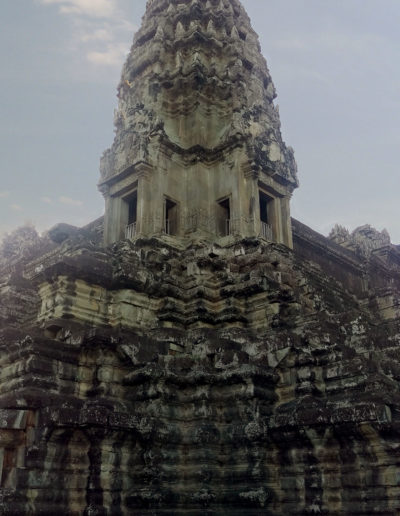
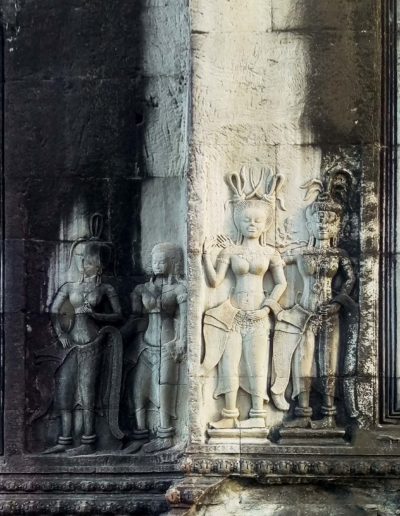

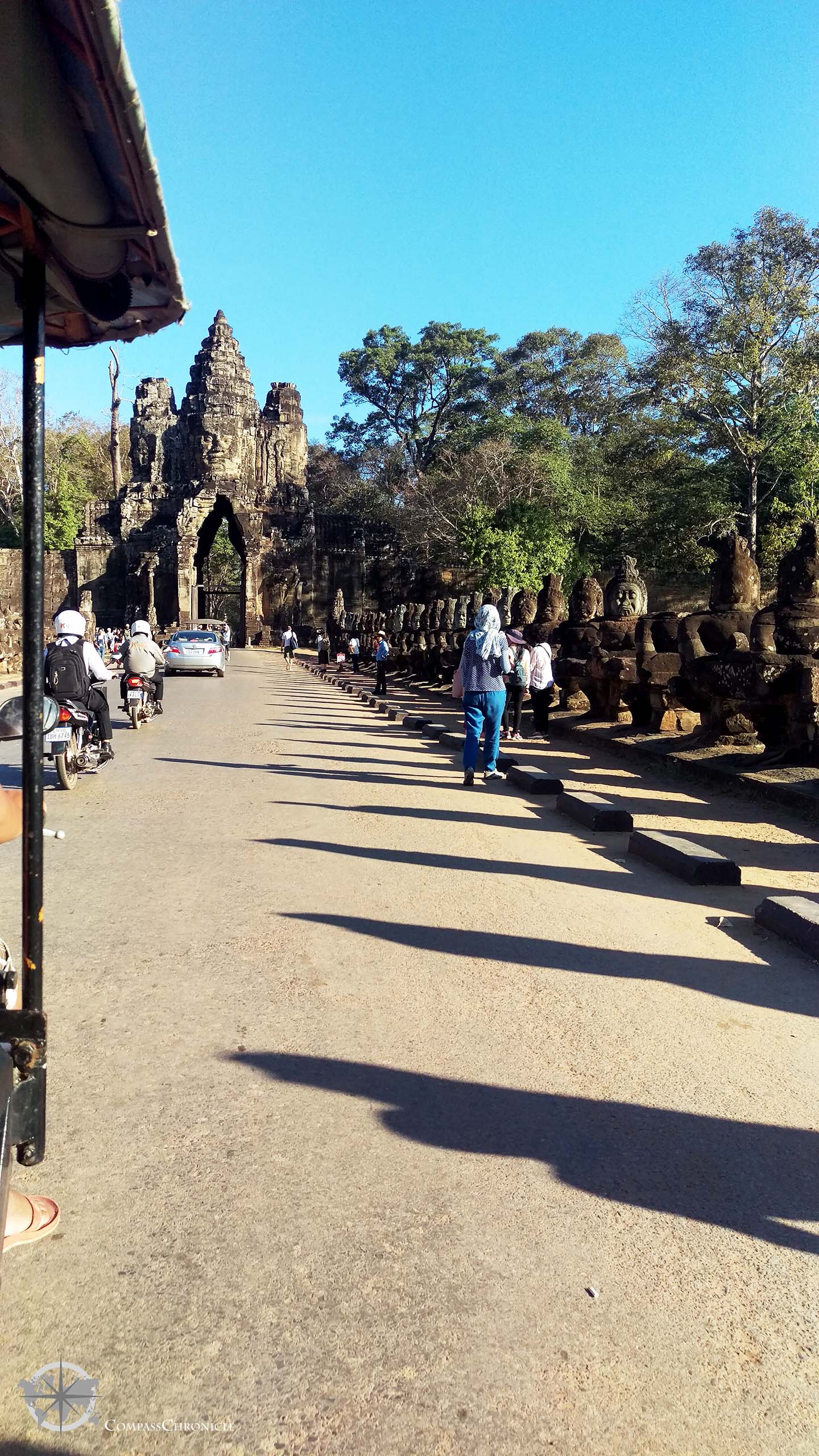

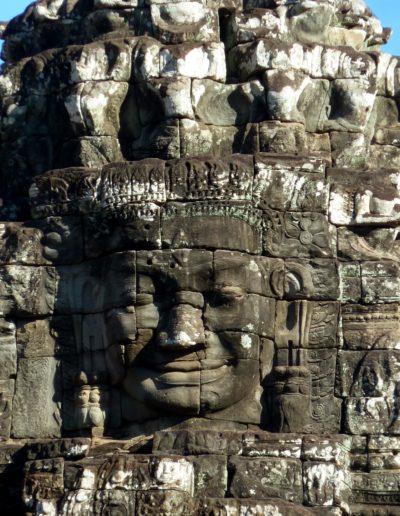






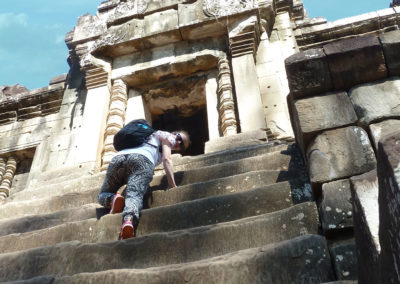




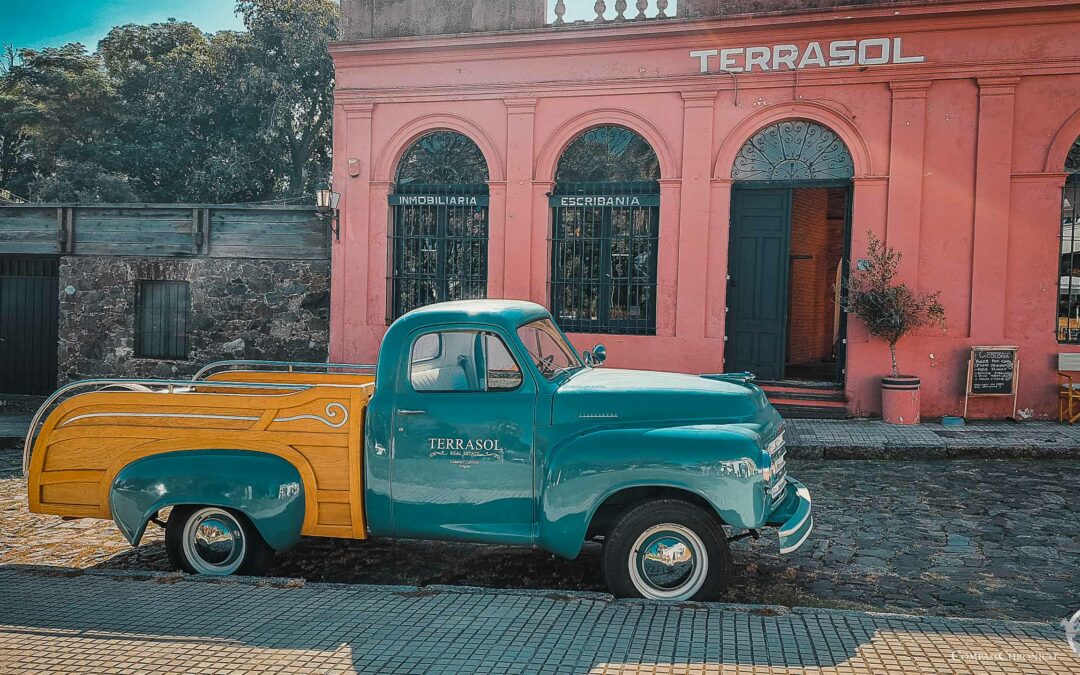
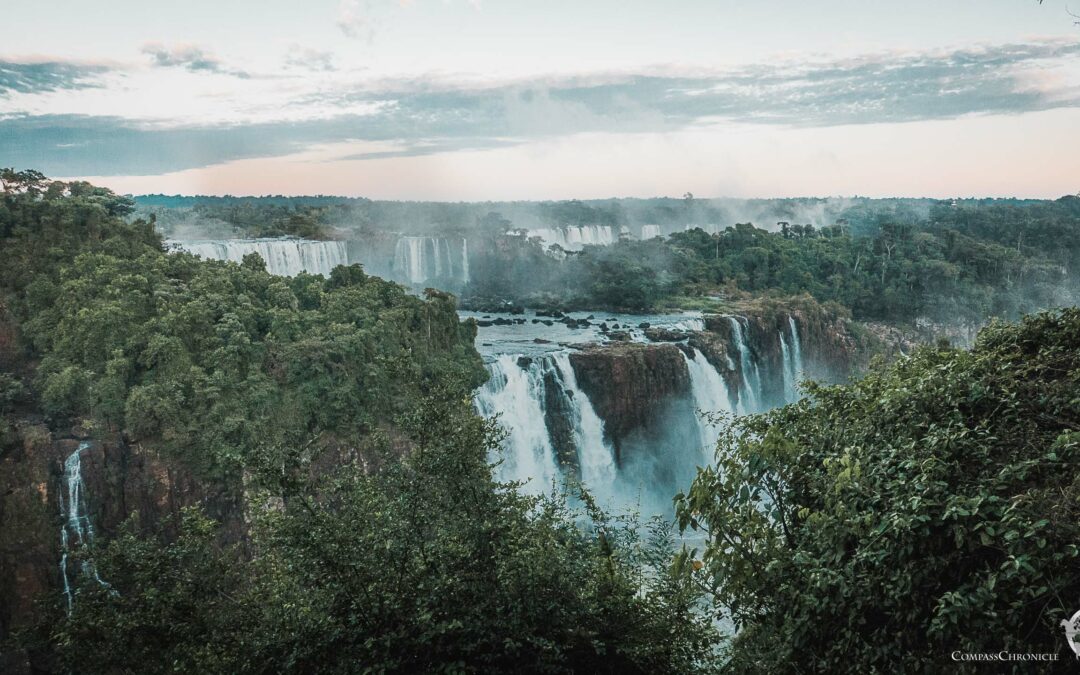
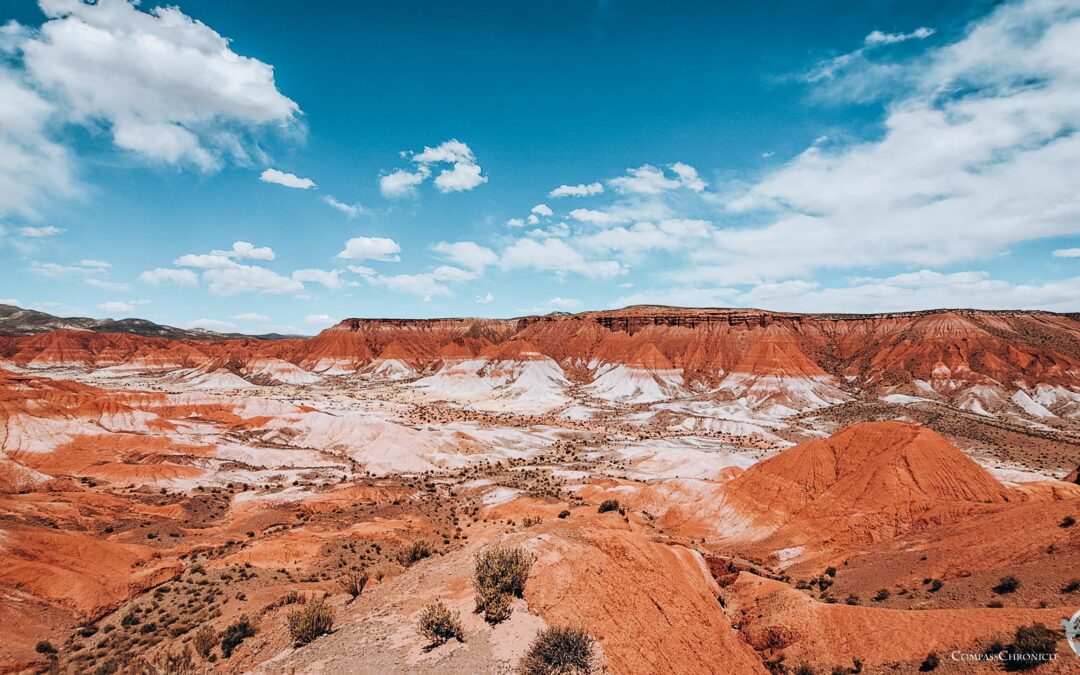
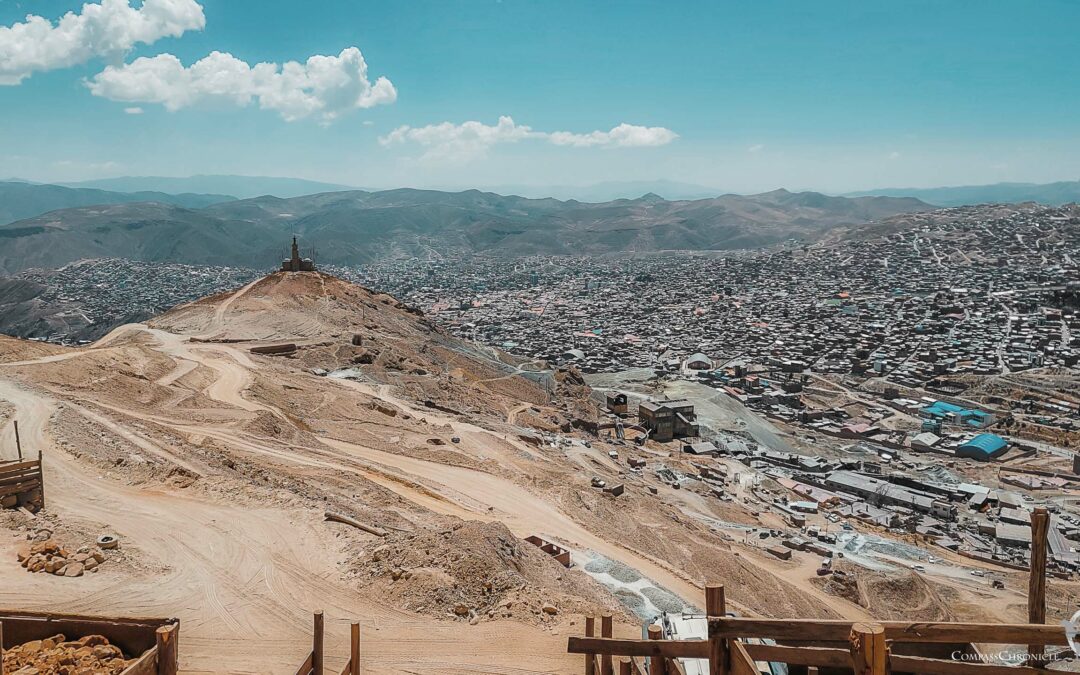
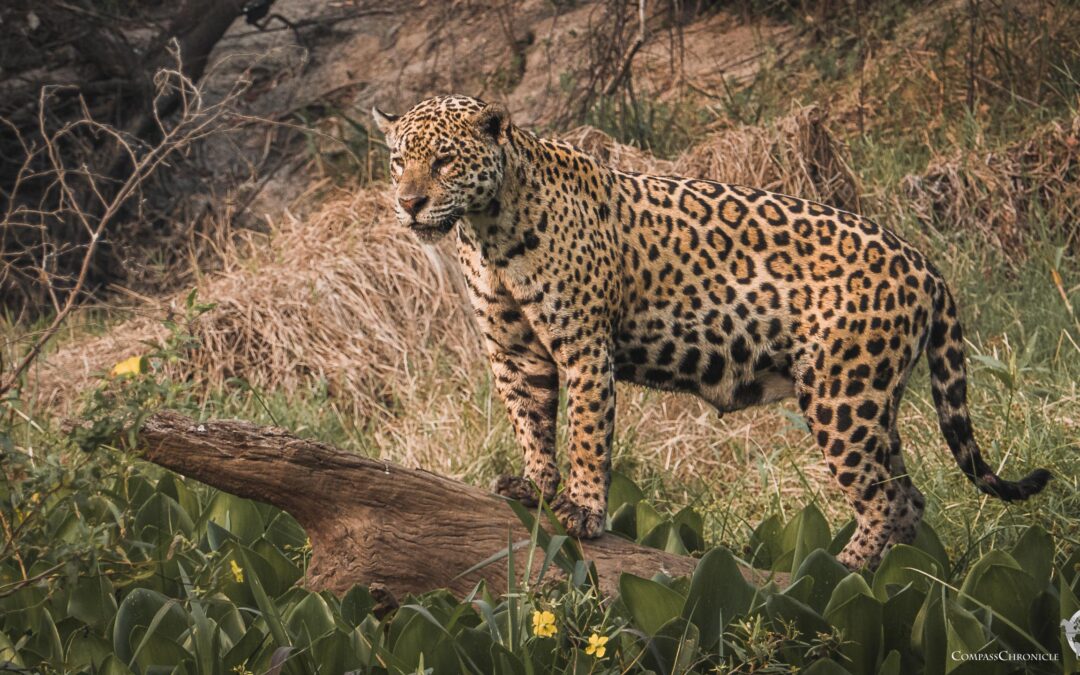
0 Comments